
A fruit seller in New York’s Chinatown. After English and Spanish, Chinese languages are the most commonly spoken languages in the state.
Although there is no official language in the United States, the vast majority of Americans speak English, and it is the language used by the government and in commerce.
However, in a land comprised of immigrants, it’s not surprising that a language other than English is often spoken in American homes.
The American Community Survey, which has been around since 1850, collects information about a wide variety of diverse topics, including how much money Americans have, marital status, educational level, disability, fertility,who has insurance, how much people are paying on their mortgages, who has access to health care, computer use, and what language is spoken at home.
The survey found that the vast majority of Americans speak only English at home. The second most common language is Spanish. However, when you take out English and Spanish, an interesting map emerges of where certain ethnic groups have congregated in the United States.

German dominates the American Midwest, which is not terribly surprising when you consider that people of German ancestry, about 16 million of them, are the largest ancestry group in the United States, according to Ancestry & Ethnicity in the United States.
French is the language spoken most often (after English and Spanish) in one-fifth of the U.S. states. More than 11 million Americans identify themselves as having either French or French Canadian roots.
Why collect this information? The U.S. government has a variety of uses for language data. The Department of Education uses the information to fund programs for young children learning English and to provide learning opportunities for adults.
Many agencies use the data to determine how to deliver critical information to people who don’t speak English well. For example, under the Voting Rights Act, voting materials must be available in the languages spoken in a community.
State and local governments also use the language statistics to determine which services to offer to people in the community who don’t speak English well, including job training.
Private business might employ bilingual workers and advertise in a language other than English in order to reach potential customers in areas with populations who aren’t fluent in English.








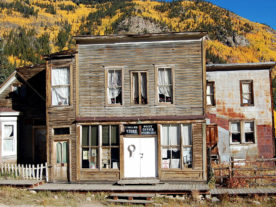
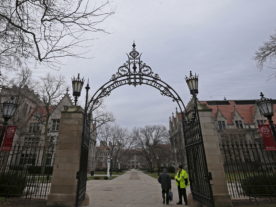


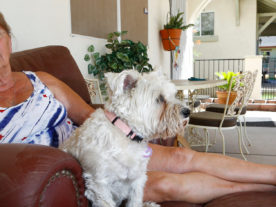




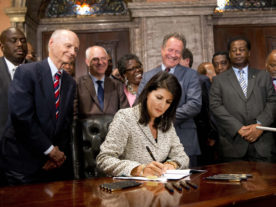

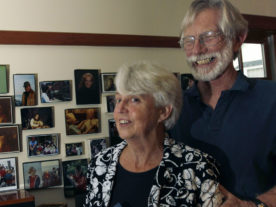


We organize exchanges for children to Spain, France and Germany. Give your kids the opportunity to speak another language, while living in another country with a local family. Host the foreign child in your home. Wonderful experience for the American and the foreign family.
“After English and Spanish, Chinese is the most commonly spoken language in the state”. That is not correct. Chinese is not a single language. It would be Cantonese or Mandarin, or both, that would be third ranking. Or possibly splitting Chinese into its separate languages might push “Chinese” into fourth or fifth place.
Chinese is no more a single language than are the Romance languages.
Hi John. You make an excellent point. While some people in the ACS survey did answer with specific dialects like “Catonese” or “Mandarin”, in New York more people in the ACS survey gave their answer as “Chinese” than any other language after English and Spanish. The ACS data treated all of these as different languages, which is why New York is marked as “Chinese”.
It would be nice if the third most talked language was listed as well because I would think in some cases the second and the third most common languages are almost identical in numbers or not.
I may not have hit the correct “Comment” box. I thought it was a female who wrote “It would be nice if they had put the third most commonly spoken language.”
They did: French. They said it is next after English and Spanish.
Oh, I see. It was Mark who posted that comment.
The population of some ethnics groups like Vietnamese and Korean is small. They have just recently settled in USA. How can they be the third most popular spoken language in many states?
Could you please explain for me!
South Dakota’s is wrong, too. The third most common language is Dakota, which is noticable seeing as a good third of the state is an indian reservation.
Hi Adam – You are right. Dakota is the state’s third most common language. Thanks for pointing that out. We’ve corrected the mistake above.
Wow! This is really an interesting map and article! Makes me proud to be American and all the diversity that goes along with it!
The nearly universal use of a common language whatever it is allows citizens of the same nation to understand each other implicitly and with the greatest shades of subtlety even when they don’t agree. This is a unifying force for any nation. Lack of it is one of the reasons Europe has enormous difficulty integrating. A common language means we have a much better chance to discuss and satisfactorily resolve our differences. In technical matters it is crucial. This is why in science, technology, commerce, transportation, one language English is the universal common language. Now if we could only get residents of England to adopt it.
I agree. And it is very bad for this country that so many Hispanic Americans make no effort to learn English. It will ultimately destroy the quality of life in the Southwest for those that live there. I remember when I lived in Riverside CA waiting in line to get an english speaking person at the DMV. There are more lines for Hispanics than natives. It was one of the reasons I left CA.
By “Native”, are you referring to European-American English? Because, if you really think about it, Spanish was spoken in CA before English ever was, and before that, all the trully “native” indigenous languages. It goes to prove that societies and their language are in a constant state of evolution. Think how Latin was once the most spoken language accross the land, and now it’s just a part of history. You either adapt to the new changes or you become extinct. Plus, in order to avoid offending the great first people of these lands, I wouldn’t go around calling myself a “native” if I were you…
Every person is a native of the place he was born. Those who migrate to other places are not native. IMO it is important for the security of the US to make the American Language the official language used by the US government. All official government business should be conducted in that language. Fortunately our culture is so pervasive that it is nearly irresistible for anyone living here to avoid learning it unless they deliberately go out of their way to escape it. Making the American Language official would prevent enclaves of immigrants creating societies within society that could one day cut themselves off from the rest of us.
I do not concede that any civilization whether it came to these lands before our more direct ancestors did or not was any greater than ours. In fact we seem to have done more with the land than any other civilization even considering those things that were recklessly thoughtless or indifferent to it. There’s plenty left unspoiled for future generations and we’ve cleaned up many of the messes that were made. Whom would anyone care to trade land with, China? India?
Before there were the original migrants from Asia, before Latin or Chinese, there were Ug and Og speaking Caveman language. From what I can tell there are still those who speak it and write so called music in it.
One of my favorite maps is “Largest Ancestry 2000” which uses Census data to illustrate the largest single ancestry (i.e. the “plurality” as defined in US English) in each state – and in each county, which makes it infinitely (or intricately) more fascinating than it would be if it showed only states. That map tends to support what history/geography buffs think they know about American demographics.
It is interesting to compare this language map with that ancestry map. The conclusion I draw is opposite the one that many readers might anticipate or may fear. It seems that the melting pot is still melding us. While I have a lot of contact with Chinese speakers in NYC, Chinese is by no means the third largest ancestry in the state. Italian is New York’s largest ancestry, but fewer and fewer Italian-Americans speak Italian at home, and as with our oily, rubbery pizza (to which I am addicted) today’s Italian visitors are somewhat loath to claim ownership of the Italian-American dialect. The Chinese simply have arrived more recently, as air travel has made a Beijing-New York trip only a modestly longer leg-cramping experience than flying from Guangzhou (Canton) to San Francisco. An earlier comment addressed the question of Chinese dialects. I strongly suspect that the majority of people who listed their household language as “Chinese” speak Mandarin rather than America’s traditional Chinatown dialect, Toisan (“a tiny little division of Cantonese.”)
On the other hand, few would be surprised to see Chinese indicated as California’s third language, but West Coast Chinese-Americans span the spectrum from recent arrivals to fifth-generation descendents of Southern Pacific Railroad workers. The PRC’s response to our sending them a Chinese-American ambassador who couldn’t speak Chinese was somehow poetic. Now Tagalog is California’s third language, but if it’s anything like the Tagalog you’d see on a Philippine website, it was peppered with English expressions before it ever left the Philippines.
On the language map there are quite a few such instances of a relatively small but recently-arrived immigrant group being shown in lieu of more numerous but longer-assimilated (and often extensively intermarried) groups. People of Arabic descent are probably not the third most numerous ancestry in Michigan. Koreans almost certainly do not comprise the third largest ancestry in Georgia (I’m relying on intuition here, y’all). However what I find most interesting is the persistence on the map of certain languages whose speakers have been assimilated for a long, long time. Above all I can’t imagine why German is listed anywhere. I understand its prominence on the ancestry map, of course. But in my small Ohio home town, where German-Americans handily outnumber Anglo-, Irish-, and Other-Americans, my German-surnamed high school classmates decades ago reliably enrolled in Spanish to fulfill the paltry foreign-language requirement – because German was too difficult. Does anybody really speak German at home, or was it some sort of sentimental response to the survey question, or did people not understand the question? Anyone who has ever asked for directions in Paris will accept the notion that in the backwoods of Maine and Louisiana the French and Indian War is ongoing, and the Louisiana Purchase is void. But German? Wer spricht hier Deutsch?
Finally I question the numbers for the languages of the First Native American Indians (did I cover everybody’s preference?) But in the states listed, after one subtracts Spanish, maybe it only takes a few hundred speakers to be third. I’m not complaining. Navaho and Yupic are not surprises, but how wonderful to see Dakota! I’m not holding out for Algonquian in Manahatta any time soon, but since Japanese-Hawai’ians (that state’s plurality ancestry, I thought) can usually correct my WASP English, I am expecting the same from Filipino-Hawai’ians albeit with a bit more forgiveness for my slang. Dare we imagine our 50th state labeled “Hawai’an?” We shall see. Ganbare, Ni’ihau! Aloha.
German can be attributed to the amish, similar groups and older immigrants. But what of French, why is that so common so far from New England and Louisiana, in states with a large and diverse immigrant presence? Is it residual french spoken by immigrants from former colonies in Africa and Asia? Is it people who claim to speak it at home but only as a novelty?